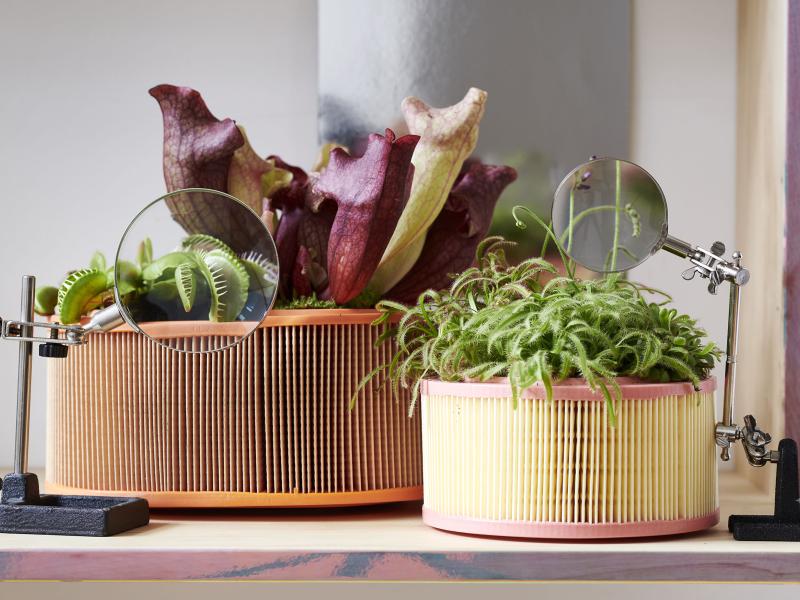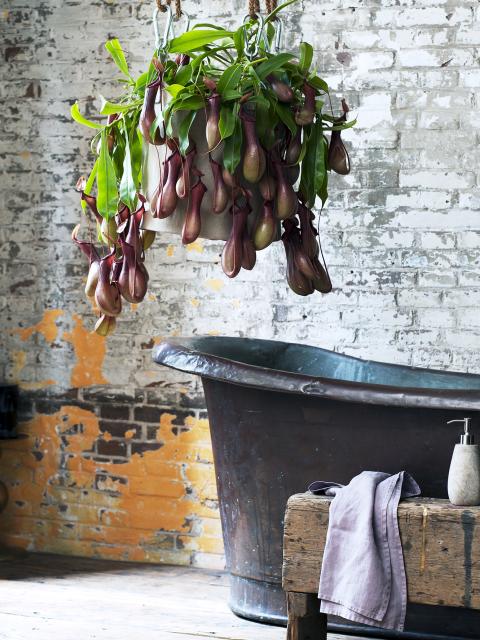Sundew (the scientific name is Drosera) is a plant that isn't what it seems. At first glance it appears to be innocence personified - but woe to the insect the allows itself to be allured into the trap. First it gets seized by a sticky substance, and is then also strangled. Sundew is totally harmless to humans, incidentally: It doesn’t bite and is just beautiful in a reddish brown sparkly way.

Colours and shapes
Sundew grows in a colourful rosette and lures, catches and digests insects with a glistening sticky substance on the tentacles that make up its glue trap. Insects find these drops irresistible, but if they come into contact with them they’re stuck. Once the prey has been caught, the leaf slowly rolls itself around it in order to digest. In the wild insects thereby provide nutrients that are virtually absent in the swampy regions where the plants live. Sundew’s flowers are white, and much larger than the plant itself. They only bloom for one day, and are then open for about four hours. Even without a flower sundew is exceptionally photogenic and highly Instagrammable.
Symbolism
Sundew’s symbolic meaning is ‘surprise’, because nothing is what it appears. The dew is glue, the open leaf is a trap and the plant’s appearance is very cute but insects don’t stand a chance. It’s all very Alice in Wonderland, full of optical illusions and surprises.
Origin
Sundew is a genius of carnivorous plants in the sundew family that comprises some 200 species. The scientific name Drosera is derived from the ancient Greek word ‘drosos’ (dew) and refers to the glistening drops on the tentacles. Sundew grows everywhere apart from Antarctica.





